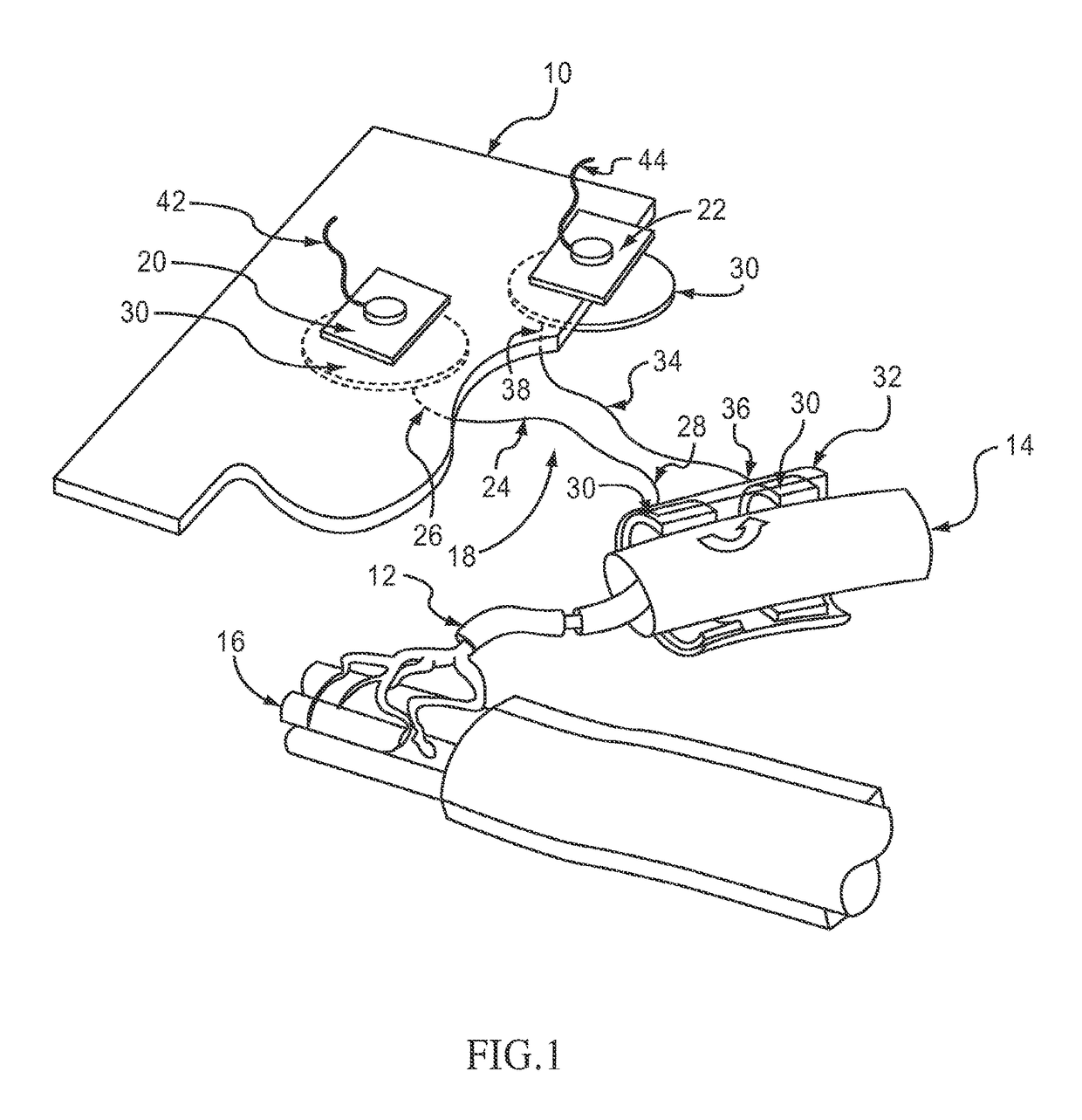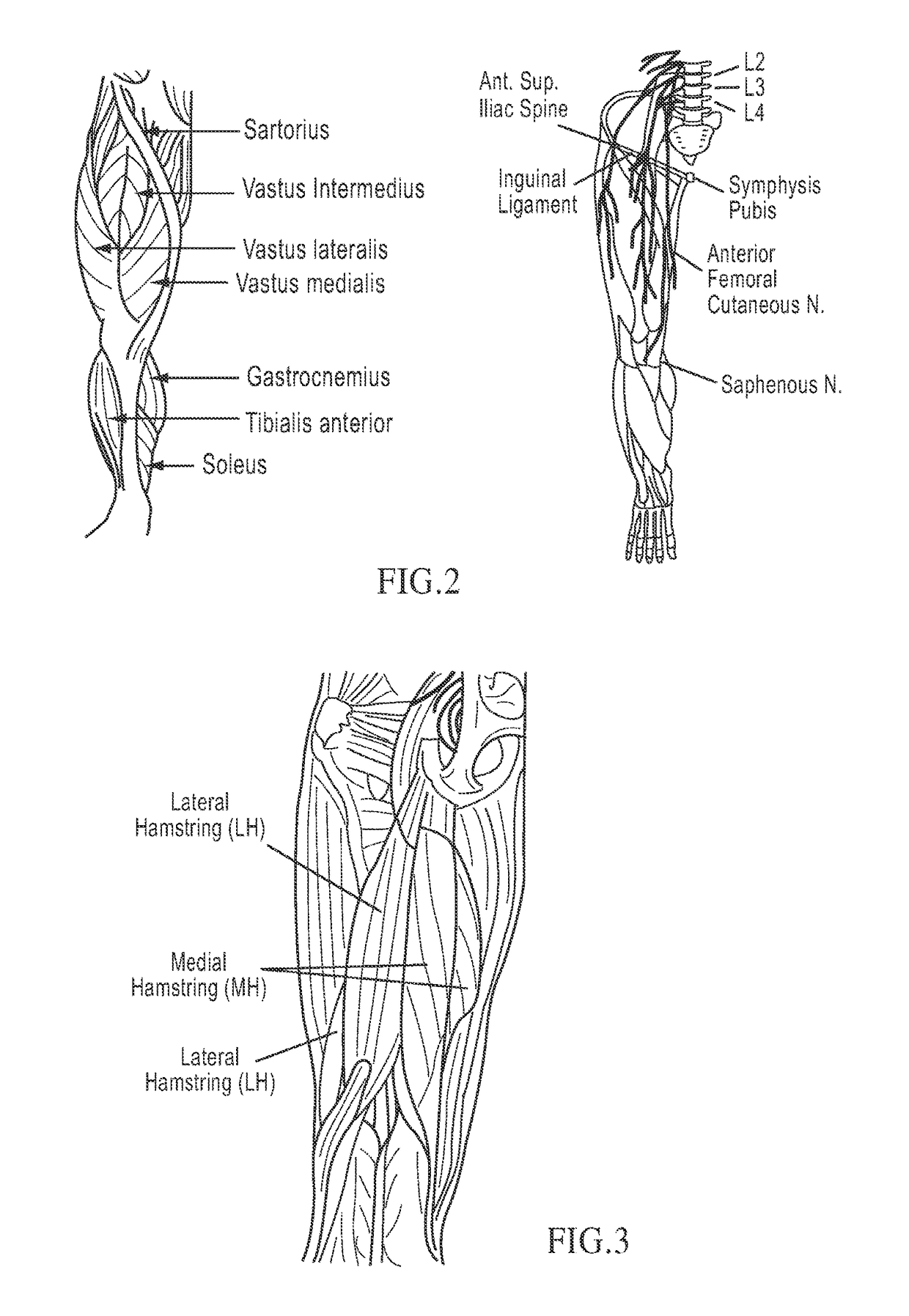Treatment of indications using electrical stimulation
a technology of electrical stimulation and indications, applied in the field of medical devices, can solve the problems of difficult or insufficient stimulation of tissues deep within the body, many non-targeted tissues may be co-activated with the targeted tissues, unwanted sensations and/or unwanted movements, etc., to reduce joint pain and/or arthritis pain, promote wound healing, and reduce or prevent muscle atrophy
- Summary
- Abstract
- Description
- Claims
- Application Information
AI Technical Summary
Benefits of technology
Problems solved by technology
Method used
Image
Examples
Embodiment Construction
[0028]Systems and methods are described herein that include the use of passive electrical conductors that can route electrical current to electrically stimulate a target body tissue. Such devices and methods can be used to either activate or block neural impulses, depending upon the frequency and the disorder to be treated.
[0029]A system as described herein can include, for example, an implant, a stimulator, such as an electric pulse generator, external electrodes, and a power source. An implant is provided for electrically stimulating a target body tissue in a subject to either activate or block neural impulses. Once implanted, the implant can provide a conductive pathway for at least a portion of the electrical current flowing between surface cathodic and anodic electrodes positioned in spaced relationship on a subject's skin, and transmits that portion of electrical current to the target body tissue to either activate or block neural impulses. Systems and methods incorporating su...
PUM
 Login to View More
Login to View More Abstract
Description
Claims
Application Information
 Login to View More
Login to View More - R&D
- Intellectual Property
- Life Sciences
- Materials
- Tech Scout
- Unparalleled Data Quality
- Higher Quality Content
- 60% Fewer Hallucinations
Browse by: Latest US Patents, China's latest patents, Technical Efficacy Thesaurus, Application Domain, Technology Topic, Popular Technical Reports.
© 2025 PatSnap. All rights reserved.Legal|Privacy policy|Modern Slavery Act Transparency Statement|Sitemap|About US| Contact US: help@patsnap.com



